The Gift of South Dakota
Subscriptions to South Dakota Magazine make great gifts!
Subscribe today — 1 year (6 issues) is just $29!
The Lady Leatherheads of Madison
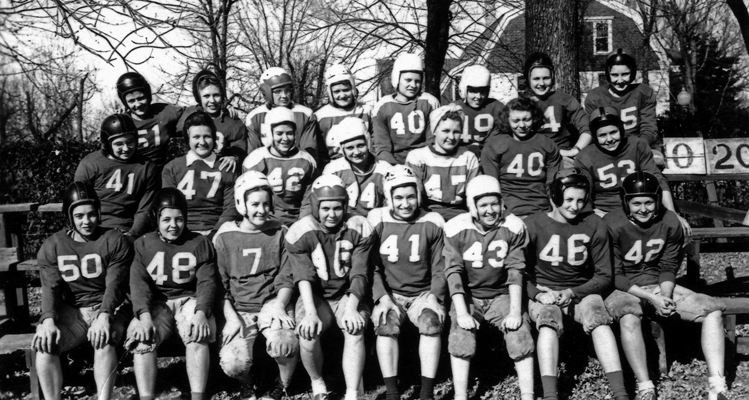 |
| A football game at Eastern following World War II seemed impossible until the women decided to have one of their own. Back Row: Mary Pardy, Beverly Coombs, Marlys Bower, Doris Treloar, Muriel Tupper, Joyce Rave, Nancy Baughman, Susie Lowry. Middle Row: Anna Ruth Lang, Dorothy Carper, Phyllis Linafelter, Ruth Hart, Joyce Walters, Beverly Rubin, Barbara Stearns, Captain. Front Row: Donna Haley, Laurel Caldwell, Dona Keiner, Jeanette Johnson, Carol Weber, Elaine Norris, Captain, Janis Holsworth, Pauline Grytness. Photo courtesy of Barbara Stearns Turner |
Rosie the Riveter was everywhere during World War II, flexing her biceps, representing the women who were proving they could weld and grind and rivet as well as the men who had been called away to the front lines. Rosie’s real life sisters changed a lot of attitudes about what “the delicate flower of womanhood” could do, not in the least their own, and that empowering message was not lost on the young ladies of Eastern State Teachers School in Madison.
Like many colleges, Eastern felt obliged to give up some campus activities during the war years. Among these were the annual homecoming celebration and most intercollegiate sports, including football, which would have been next to impossible in any case because so many of the region’s young men were overseas or away doing war-related work.
Victory had been achieved in Europe and the Pacific by September of 1945, and the entire country was eager to resume their interrupted lives. Homecoming was again on the schedule at Eastern, but the traditional football game seemed out of the question: just three men enrolled for the fall term that year. Where could 11 Trojans be found to don the blue and gold?
Enter the women of Eastern. “A bunch of us were sitting around after gym class and we thought, if we’re going to have homecoming, we’ve got to have a football game,” says Susie Lowry, who was a freshman in 1945. None of them had ever heard of women playing football before, but that didn’t mean they couldn’t do it. “We decided we should have a game of our own.”
Susie, who now lives in Globe, Arizona, was the daughter of V.A. Lowry, Eastern’s president from 1933 to 1962 — a state college residency second only to I.D. Weeks’ tenure as head of the University of South Dakota in Vermillion. V.A. took the unprecedented notion of women playing football, not to mention his daughter playing football, more or less in stride. Daisy Lowry might have objected more strenuously, as any mother might, if she harbored any hope of changing her daughter’s mind.
“My mom saw this coming,” says Susie with a laugh. “She tried to make me a lady but it never really worked out.”
Barb (Stearns) Turner, a freshman enrolled in commercial courses, was another woman ready and willing to strap on a leather helmet. Barb, whose home is in Brookings, was the best natural athlete among the women at Eastern, according to Pauline (Grytness) Lunde, one of her teammates.
There was a lot of clowning around. A few of us fell down, just to make it look good, but it wasn’t really rough or anything.
“That might be stretching it a bit,” says Turner modestly. If nothing else, she at least qualified as one of the most experienced women when it came to rough and tumble. Her training began early, at home where she learned to hold her own with five brothers, and continued through school as she played pick-up football in vacant lots around Madison. Turner also played intramural sports, “but we didn’t have opportunities (or intercollegiate competition) like the girls of today,” she says with an understandable touch of envy.
Lining up with such eager athletes were a bunch of ladies on a lark. “Football was the last thing some of the girls would have thought about. Unless they were interested in a boy, of course,” says Lunde, of Rapid City. “But when you’re 18 and unattached, you make your own fun.”
Which was also a case of making a virtue of necessity, according to Turner. “Gas was rationed. Tires were rationed. We couldn’t just get in the car and go like they can today. We had to make our own fun.”
Robert C. Nelles, another freshman at Eastern that year, was on the committee in charge of organizing homecoming. The very idea of women playing football “was enough to curl your teeth,” he wrote in an account of the game for the History of Lake County, but the committee nonetheless gave its stamp of approval.
“Football Game To Be Played By Debs,” announced the Madison Daily Leader, which doubtless led to a few fussbudgets around town muttering about what that campus crowd would think of next, and how the younger generation was going to hell in a hand basket. They were a silent minority, however.
“Nobody had a real problem with girls playing each other in football,” says Turner. “Boys playing girls … now that might have caused a stir.”
So it was game on in Madison!
Miss Leota Van Ornum, the college’s physical education teacher, agreed to serve as coach. There was a high school on Eastern’s campus where students training to be teachers did their practice teaching. Robert Ormseth, who coached the school’s football team, promised to lend her a hand.
There were two groups of Eastern coeds at the time: those who lived at their homes in Madison while attending classes on campus, and those from surrounding small towns who lived in the dorm. They were as distinct as oil and water, so the 23 girls who wanted to play quite naturally divided into two teams, Townies and Dormies.
“What’s a nicer word than rivals?” wonders Lunde when asked how the two groups related to one another. Though the game was played in good fun, in other words, it would be safe to say that the spirit of competition was not entirely absent.
Uniforms presented a minor problem, and not for the reasons that might come to mind first. After five years in storage, apparently without mothballs, the college’s jerseys were rife with holes and most of the pads were literally coming apart at the seams. Enough serviceable uniforms were eventually scrounged from the on-campus high school and Madison Central; with a nip here and a tuck there, the Dormies in gold and Townies in blue were ready to take the field when Homecoming Day arrived.
Football was the last thing some of the girls would have thought about. Unless they were interested in a boy, of course.
“A fairly large group of spectators showed great interest and enthusiasm during the game,” according to The Eastern, the campus newspaper. Friends and family and alumni had to be well represented for that to be so because the 23 players constituted almost half of Eastern’s enrollment that term. Robert Nelles and Paul Tommeraasen, two of the three male students, had been pressed into service as game officials; the third was married, and he had to baby-sit. That left precious few student bodies to fill the stands — which dimmed the women’s enthusiasm and sense of fun not at all.
“We tried to be almost real, with huddles and all that,” says Lowry. “There was a lot of clowning around. A few of us fell down, just to make it look good, but it wasn’t really rough or anything.”
Pauline Lunde remembers that she and some others went to the homecoming tea that night with bandages on, “which was kind of funny because it was supposed to be this formal affair,” but a few skinned knees and grass burns weren’t enough to assuage the disappointment of at least one young lady. Joyce (Rave) Evans was one of a number of players who had never even seen a football game before; she later recalled that the game wasn’t as hazardous as she’d been led to expect after all the bother of getting fitted out in a helmet and pads. “Football didn’t impress us farm girls much,” she told a reporter when the two teams held a reunion in 2001.
The neophyte gridders proved more adept at defense than offense, holding each other scoreless until the game’s final minute. Doris Treloar of the Dormies finally broke through and scored a touchdown, which was immediately answered by Nancy Baughman of the Townies. A.E. Swan, the college librarian who was serving as the referee, considered that an opportune moment to end the contest on an amiable note. Either that or he was tired and wanted to go home, as a rumor later alleged.
Nelles claimed that a large number of broken nails contributed to getting the game called early, and we could dismiss this as a frivolous tale told by men, a mere stereotype, if not for the halftime show. There were no rousing, locker room exhortations to win one for the Gipper for these women. They had more important things to do: namely, to stay on the field and touch up their rouge and face powder before the amused spectators.
Vanity of vanities, all is vanity! If only they’d chosen to do something entertaining, to poke a little fun at themselves, the Daily Leader might not have dubbed them “The Powderpuff and Rouge Elevens,” and the demeaning, now-common term “Powderpuff Football” might never have been heard.
As football games go, Eastern’s homecoming contest wasn’t quite the stuff of legend. That doesn’t mean the women didn’t make a little history. This was the era of great football nicknames, like Michigan’s four-sport phenom Elroy “Crazy Legs” Hirsch and Illinois’ legendary runner Harold “The Galloping Ghost” Grange. An epic nickname was likewise born that day in Madison: Pauline “Swivel Hips” Lunde, so christened by her husband Bud. “I think it’s kind of cute, don’t you?” says Pauline’s daughter Holly, a moment after letting slip the family secret. “I just think it’s great they played the game. It’s just so hard to imagine my mom ever playing football!”
On a grander stage, Madison’s Lady Leatherheads can make a credible case they were the first women to ever play an organized football game. Not that any of them seem terribly interested in making such a claim. They seem quite content with the shared memory of a crisp October day when they were young and brimming with life and able to make their own fun.
Editor’s Note: This story is revised from the November/December 2011 issue of South Dakota Magazine. To order a copy or to subscribe, call (800) 456-5117.



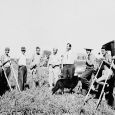
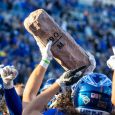
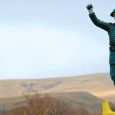
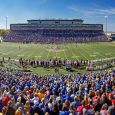



Comments